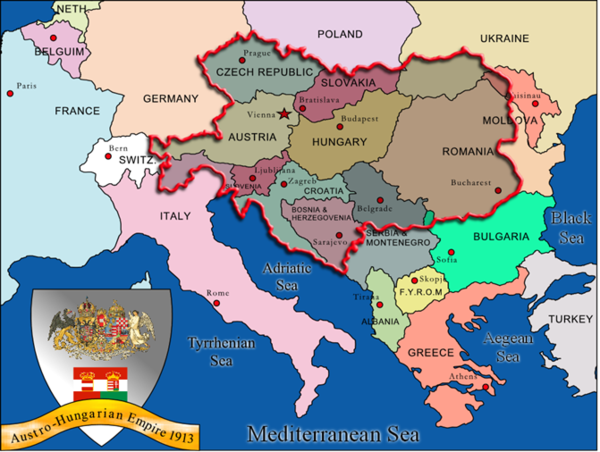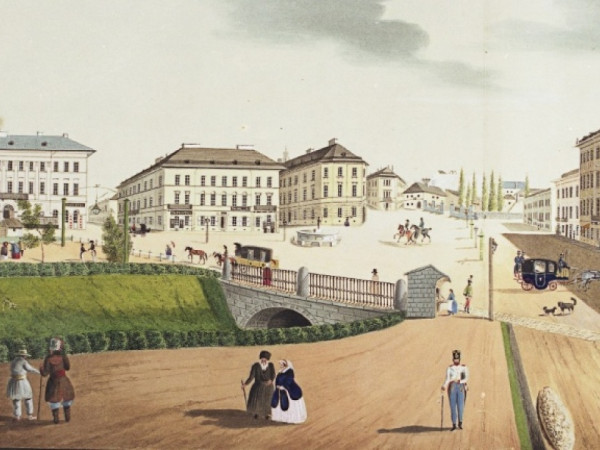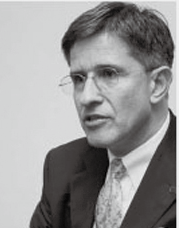
[아츠앤컬쳐] 우크라이나는 폴란드 귀족들이 1387년부터 무력으로 지배해왔고, 1434년부터는 헌법으로 통치했다. 폴란드 귀족들은 나쁜 평판으로 결국 해체되고, 1772년 폴란드가 제1차 분할되어 갈리시아(우크라이나 극서 지역, 빈 방언으로 루테니아라고 함)와 수도 리비우(렘베르크)가 오스트리아-헝가리 제국의 일부로 편입된 채로 제1차 세계대전까지 유지되었다.
오스트리아의 대공비이자 헝가리 보헤미아의 여왕 마리아 테레시아는 폴란드 분할의 부도덕함에 크게 비통해했다. 반면, 그녀의 아들 요제프 2세는 그녀가 동의하도록 압력을 가했다. 러시아와 프로이센은 폴란드 왕국의 나머지 부분을 분할하며 전쟁을 끝냈다. 1775년 오스만 제국의 속국이었던 몰도바 공국이 체르니우치를 중심으로 한 부코비나를 가져가며, 1792년 폴란드 왕국은 사라지게 된다.
1793년 제2차 폴란드 분할은 러시아의 예카테리나 2세가 리투아니아, 벨라루스, 그리고 드네프르 강 서쪽 우크라이나의 대부분을 점령한 일이다. 합스부르크 가문은 1795년 마침내 또다른 분할을 추진하여 제국과 왕국을 북쪽으로 루블린과 크라쿠프까지 확장하였는데, 현재는 모두 폴란드의 영토이다.

그때부터 우크라이나의 영토는 분할되었다. 동쪽 영토는 우크라이나인들의 독립을 거부하고 차르 제국이 통치했으며, 제국 대러시아와 비교하여 소러시아라고 불렸다. 요제프 2세 아래에서 리비우는 갈리시아 왕국과 로도메리아 왕국의 수도가 되었다. 황제의 명령에 따라, 많은 수도원과 교회들이 정부 건물(관청, 도서관 등)로 바뀌었다.옛 리비우 주변은 프라하, 빈, 브라티슬라바, 부다페스트와 비슷하게 서구 스타일의 오스트리아의 고전주의 양식의 건물이 들어섰다.
1848년 리비우에서 ‘국가들의 봄’ 혁명이 일어나 사회 생활의 민주화와 국가 및 문화 운동의 발전으로 이어졌다. 19세기 후반에 도시는 경제와 문화 면에서 붐이 일어났다. 갈리시아에서 유전을 발견하여 많은 기업이 들어서자 리비우는 중요한 금융 중심지가 되었다.
1861년 우크라이나의 첫 번째 철도 노선이 두 도시 리비우와 프르제미슬을 연결하였고, 이후 빈까지 연장되었다. 1894년에 열린 갈리시아 지역 전시회는 이 지역의 황금기를 기념했고, 그 당시 이 도시에 최초의 전차 노선이 놓였다.
제1차 세계대전이 끝난 후 몇 주 동안 러시아군이 갈리시아를 정복하면서 오스트리아와 작별을 고하게 된다. 러시아 내전과 폴란드-소비에트 전쟁으로 우크라이나 인민 공화국은 붕괴되었다. 1921년 리가 조약으로 서갈리시아가 폴란드에 합병되고, 1년 후 우크라이나 소비에트 사회주의 공화국은 소련에 합병되었다.

Austria and Ukraine
Ukraine was since 1387 under Polish nobility, who had ruled militarily and since 1434 under constitutional law. The Polish Noblemen had a very bad reputation which finally resulted into dismantle Polish nobility and the first partitions of Poland in 1772 where Galicia (most western area of Ukraine, called Ruthenia in Viennese dialect) with the capital Lviv (Lemberg), became part of Austria Hungary Empire, more precise the Austrian part of the Empire where it remains until the first World War.
Maria Theresia, Archduchess of Austria and Queen of Hungary and Bohemia loudly bewailed the immorality of the action. Whereas her son Joseph II pressured her into agreeing to share. Russia and Prussia divided the remaining Part of the Kingdom of Poland to settle their disputes in wars against each other. In 1775, Bukovina was added with Chernivtsi as its center, dealt by the Principality of Moldova, an Ottoman vassal state and in 1792 the Kingdome of Poland had ceased to exist as a state.
The second Partition of Poland was happened 1793, in which Tsarina Catherine II of Russia had appropriated Lithuania, Belarus and with Podolia a large part of Ukraine west of the Dnieper. The house of Habsburg pushed for another division, which finally happened in 1795. Then the Imperial and Royal Monarchy, extending far to the north to Lublin and Krakow, both are now territory of Poland.

From then on, Ukraine was territorially divided. Over the lands east ruled the Tsarist Empire, which denied the Ukrainians any national independence. It was called Lesser Russia to emphasize its secondary status vis-à-vis the imperial Greater Russia. Under Joseph II, Lviv became the capital of the province - the Kingdom of Galicia and Lodomeria. By order of the emperor, many monasteries and churches were converted into government premises (customs, library, etc). Around the old Lviv, a new Austrian classicist-style building appeared, which present itself as most Western Stile city, similar to Praha, Vienna, Bratislava and Budapest.
In the 1848, a "Spring of Nations" revolution broke out in Lviv, to start protests against the Austrian authorities. The events led to the democratization of social life and the development of national and cultural movements. In the second half of the XIX century the city is experiencing an economic and cultural boom. Due to the discovery of petroleum fields in Galicia and development of many enterprises Lviv become an important financial center. As a result, in 1861 the first railway line of Ukraine was connecting two cities Lviv and Przemysl, extended to Vienna. The Galician Regional Exhibition in 1894 marked the golden age of the region, at that time the first electric tram line was laid in the city.
In the first weeks of the First World War Russian troops conquered large parts of Galicia and it becomes a farewell to Austria. However, the hope of finally gaining territorial and state independence was only fulfilled for a brief moment. In the Russian Civil War and the Polish-Soviet War, the Ukrainian People's Republic was crushed. In the Peace of Riga in 1921, Western Galicia was annexed to Poland, a year later the Ukrainian Soviet Socialist Republic merged into the Soviet Union.

글 | 볼프강 슬라빈스키 Wolfgang Slawinski
서울명예시민
한·오스트리아협회 부회장

